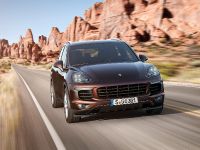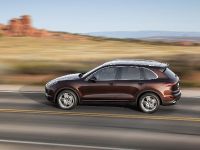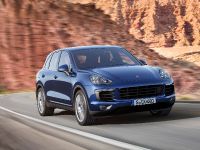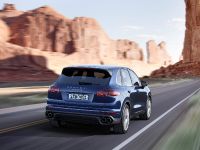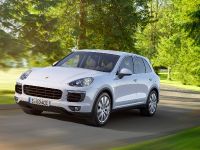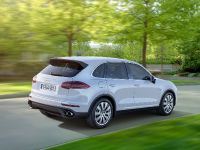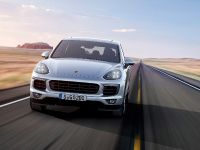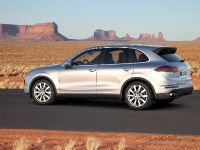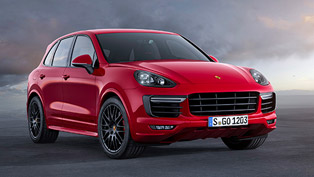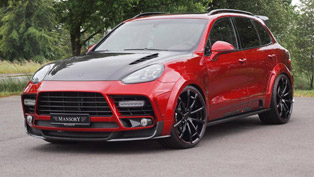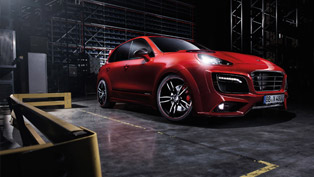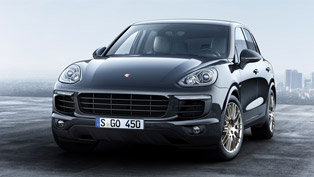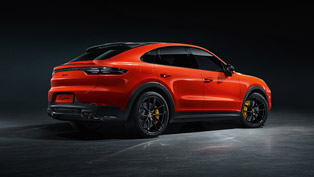Porsche Reveals Updated 2015 Cayenne Range
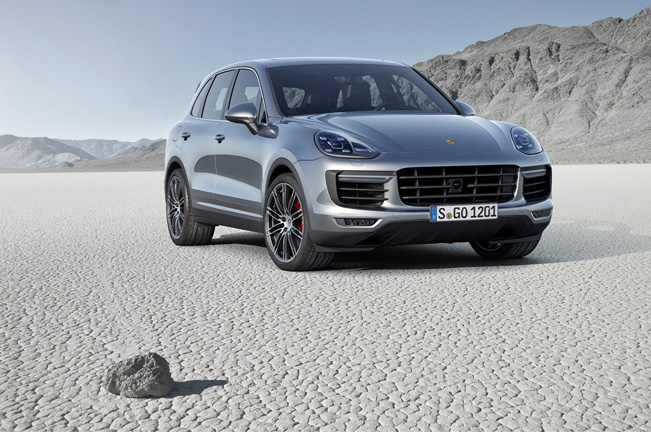 The key characteristics of the 2015 Porsche Cayenne Range have been just announced. The new Cayenne has an updated and sharper design, enhanced efficiency and offers wide range of standard equipment features. The new generation of this Porsche model will be launched in five versions: Cayenne Diesel, Cayenne S, Cayenne S Diesel, Cayenne Turbo and Cayenne S E-Hybrid. The latter is the first plug-in hybrid offered in the premium SUV segment.
The key characteristics of the 2015 Porsche Cayenne Range have been just announced. The new Cayenne has an updated and sharper design, enhanced efficiency and offers wide range of standard equipment features. The new generation of this Porsche model will be launched in five versions: Cayenne Diesel, Cayenne S, Cayenne S Diesel, Cayenne Turbo and Cayenne S E-Hybrid. The latter is the first plug-in hybrid offered in the premium SUV segment.
Another interesting fact around the 2015 Cayenne S is that its new 3.6-litre V6 bi-turbo engine was fully developed by the company. All in all, each powertrain that drives the new generation models show enhanced performance and efficiency figures. The improved efficiency is due to modifications to the entire drivetrain, the advanced ‘Auto Stop/Start Plus' function and the optimized thermal management.
As mentioned, the Cayenne S E-Hybrid is the first ever produced plug-in hybrid in the premium SUV segment. The car is equipped with a lithium-ion traction battery with an energy capacity of 10.9 kWh. The battery enables an all-electric driving range of 18 to 36 km. Furthermore, the electric motor now produces 95 hp (70 kW) and works together with the three-litre V6 supercharged engine which generates 333 hp (245 kW).
Together, both power systems produce a combined output of 416 hp (306 kW) at 5,500 rpm and a total system torque of 590 Newton metres (435 lb-ft) from 1,250 to 4,000 rpm. This enables an acceleration sprint from 0 to 100 km/h in only 5.9 seconds on the way to a top speed of 151 mph. The top speed in all-electric driving is 77 mph. Cayenne S E-Hybird shows combined fuel consumption of 83 mpg and CO2 emissions of 79 g/km.
The next innovation in the 2015 Cayenne range is the new 3.6-litre V6 bi-turbo engine that powers the Cayenne S. The powertrain was developed entirely at Porsche. It has a fuel consumption rated between 29.7 mpg and 28.8 mpg and CO2 emissions at 223-229 g/km.
The output of the bi-turbo V6 is measured at 420 hp (309 kW) at 6,000 rpm, while the torque – at 550 Nm (405 lb-ft) and it is available from 1,350 to 4,500 rpm. The unit is coupled with a standard eight-speed Tiptronic S transmission, thanks to which the Cayenne S accelerates from 0 to 100 km/h in just 5.5 seconds (5.4 seconds with the optional Sport Chrono package).The top speed is 161 mph.
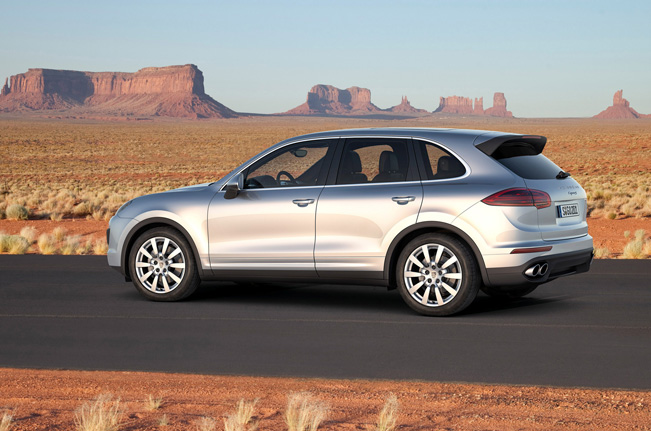
The third model under our attention is the Cayenne Turbo, which is powered by the 4.8-litre engine with eight-cylinders and twin turbochargers. It has the ability to generate 520 hp (382 kW) at 6,000 rpm and torque of 750 Nm (555 lb-ft) from 2,250 to 4,000 rpm. More power and torque means faster acceleration time from 0 to 100 km/h, which in this case is rated at 4.5 seconds (4.4 seconds with the optional Sport Chrono package). The top speed here is 173 mph, while the fuel consumption is rated between 25.2 to 24.5 mpg and the CO2 emissions between 261-267 g/km.
Porsche offer two diesel variants for the Cayenne: Diesel and S Diesel. The firs one is driven by the three-litre V6 engine. It produces 262 hp (193 kW) at 4,000 rpm and has a fuel consumption of 42.8 to 41.5 mpg. The CO2 emissions are 173-179 g/km. The torque of this Diesel version is 580 Nm (428 lb-ft) from 1,750 to 2,500 rpm. Powered by this engine the car accelerates from 0 to 100 km/h in 7.3 seconds (7.2 seconds with the optional Sport Chrono package), and has a top speed of 137 mph.
Cayenne S Diesel is powered by the 4.2-litre V8 engine, which generates 385 hp (283 kW) at 3,750 rpm and torque of 850 Newton metres (627 lb-ft) from 2,000 to 2,750 rpm. It delivers fuel consumption of 35.3 mpg and CO2 emissions of 209 g/km. From a standstill it reaches 100 km/h in just 5.4 seconds (5.3 seconds with the optional Sport Chrono package) on its way to a top speed of 156 mph.
More update in the 2015 Cayenne range include chassis tuning. In this way the new SUV will deliver more comfort and sporting responsiveness. The exterior appearance of the car was also refined and now exudes sharper design with precise lines and purposefully-placed angles. To be more precise, entirely new are the design of the front body, the front wheel arches, the bonnet and the airblades in the nose.
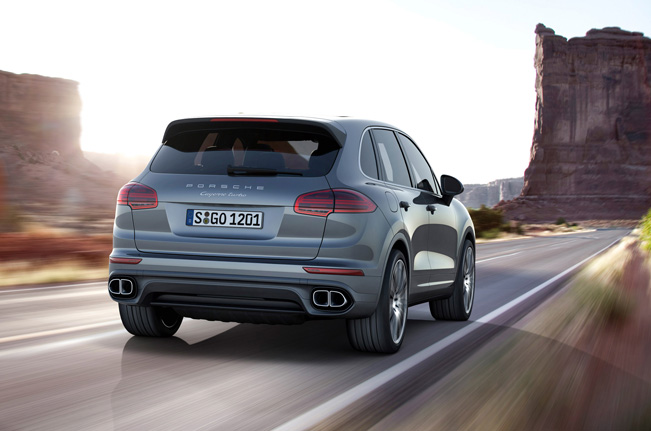
The designers have kept the emblematic for the model bi-Xenon headlights, characterized by four-point LED daytime running lights. They come standard in the Cayenne and Cayenne S models. The Turbo version is further emphasised by LED headlights with the Porsche Dynamic Light System (PDLS) fitted as standard.
At the rear one can also see new styling treatment. The design of the rear lights creates a three-dimensional effect, and the brake lights include four distinctive elements. In addition, the number plate recess, boot handle and lights have new design which allows integrating them more elegantly into the tailgate. The designers also re-shaped the horizontal lines of the SUV, the exhaust tailpipes which are now integrated in the lower rear section, and also added an automatically opening/closing tailgate as a standard.
The interior of the car is also changed. For instance, the driver gets a new multi-function sports steering wheel with gear shift paddles as standard. The rear seating system is now more comfortable, and seat ventilation can now be ordered as an option.
The standard equipment on all Cayennes feature Porsche Traction Management all-wheel drive, Bi-xenon headlights with four point LED daytime running lights, multi-function sports steering wheel with paddle-shifts, ParkAssist front and rear, cruise control, automatic climate control, powered tailgate, Sport button and Start/Stop technology with coasting function.
The Turbo gets as a standard LED headlights with Porsche Dynamic Lighting System, 19" alloy wheels, Porsche Active Suspension Management (PASM) with self-levelling air suspension, Porsche Communication Management with satellite navigation and BOSE Surround Sound audio.
Source: Porsche
